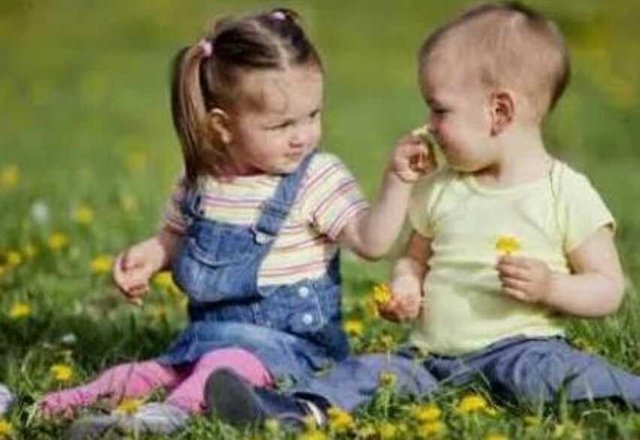
EMBRYAL DEVELOPMENT OF CHILDREN
A. The nature of early childhood emotional development
Emotion comes from meaning emovere emetus or shame, something to press against something. According to Crow and Crow (Sunarti, 2001: 1) "emotion is a volatile situation for the individual to serve the internal adjustment of the environment to achieve the well-being and security of individuals." The feelings of emotions or psychological symptoms that are subjetif, which are usually the symptoms of about and experienced quality like it or not, are in many areas.
Different feelings of emotion for a child of an older child or adult are factoring and learning. Characteristic of children's emotions make the various adult feelings of Sunarti (2001: 11), namely:
Ø strong emotions; young children react with the same intensity to both trivial and severe situations.
Ø The emotions appeared seirng times, children often point to their emotions rising and found that emotional explosions often result in sanctions, learn to adapt to situations recall emotions. Then curb emotional outbursts or react in a way that is more acceptable.
Ø The emotions of transient, rapid transition to small children laughter will cry or angry to smile or jealousy, love, the result is three factors.
The feelings of emotions that exist within us can feel strong. Emotions of hatred, fear, anger, happiness, happiness, and sadness. Such feelings are pictures of emotions. Goleman (441) finds that expression of emotion is a feeling or thought, and the circle tends to act.
Emotions for children, because this is the ability to color children's activities. Like the color there are many kinds of and the color will exert influence. The color has an effect. The color will be beautiful if the paint that is capable of dyeing, so it is virtually painted a nice look and is comfortable to enjoy according to Sarlito Wirawan, Yusuf S. Syamsu's book Emotion "Every state is a person who has accompanied the colors effectively at both the level of the weak (Surface) , and at a wide (deep) level.
With this understanding, it has been shown that this is a powerful color sense that accompanies every state or behavior of individuals that are effective in wrna. Some emotions have experienced the child on the face (menghayat). A particular situation. For example, joy, happiness, despair, surprise, hatred (not great), and so on.
Emotions of children are different from the emotions of adults or people know it is caused by the factor of maturity and learning factors to develop various emotions, the child has the breed characteristics, type of emotion that is unique, especially if they meet the expression outside of some physical changes expressing visible emotions,
According to Golemanada some emotion that often appears to the children, first, anger. Heves, Rampage, hatred, angry, annoyed, confused heart annoyed, bitter, lively, irritable, hostile and the most severe violent. Secondly, sadness, Perih, sad, vaguely, melancholy, harm, self-esteem, loneliness, denied, hopelessness, and become depressed. Third, fear, anxiety, fear, nervousness, Khawtir was feeling frightened, cautious, not silent, and this could be a phobia and a panic. Fourth, enjoyment InderawiTakjub, enthralled, accomplished, incredible joy and I'm glad for the fifth, Love, buyers, friendship, trust, kindness, a kind of close, devotion, Yours, Love. Sixth, surprised, wonderful, Terpanah ,. For a week. Outraged Hina annoyance, Sick Hate, I do not like, Mau Vomiting, Eighth, Shame, Taste, Shame liver, heart complaints, repentant heart, Hina, disgrace, and hearts Broken writes of emotion arises in a consistent child stimulation.
Emotional type
Stewart att all (1985) to express the feelings of joy, anger, fear and sorrow as the core emotions.
Happy
Everyone of different ages, from infants to dewasamis, is delightful. Usually happy and happy feelings are expressed with a smile. Feelings can feel love and self-confidence. It is also a pleasure to find something during the creative activity, gain victory, or reduce stress activity.Angry
The emotion of anger happens when individuals feel inhibited, frustrated because they did not achieve the desired, mutilated people, harassed or faced with demand that is contrary to their wishes. This anger makes people like the attack of their enemies. anger makes people very energetic and impulsive (follow desire / k